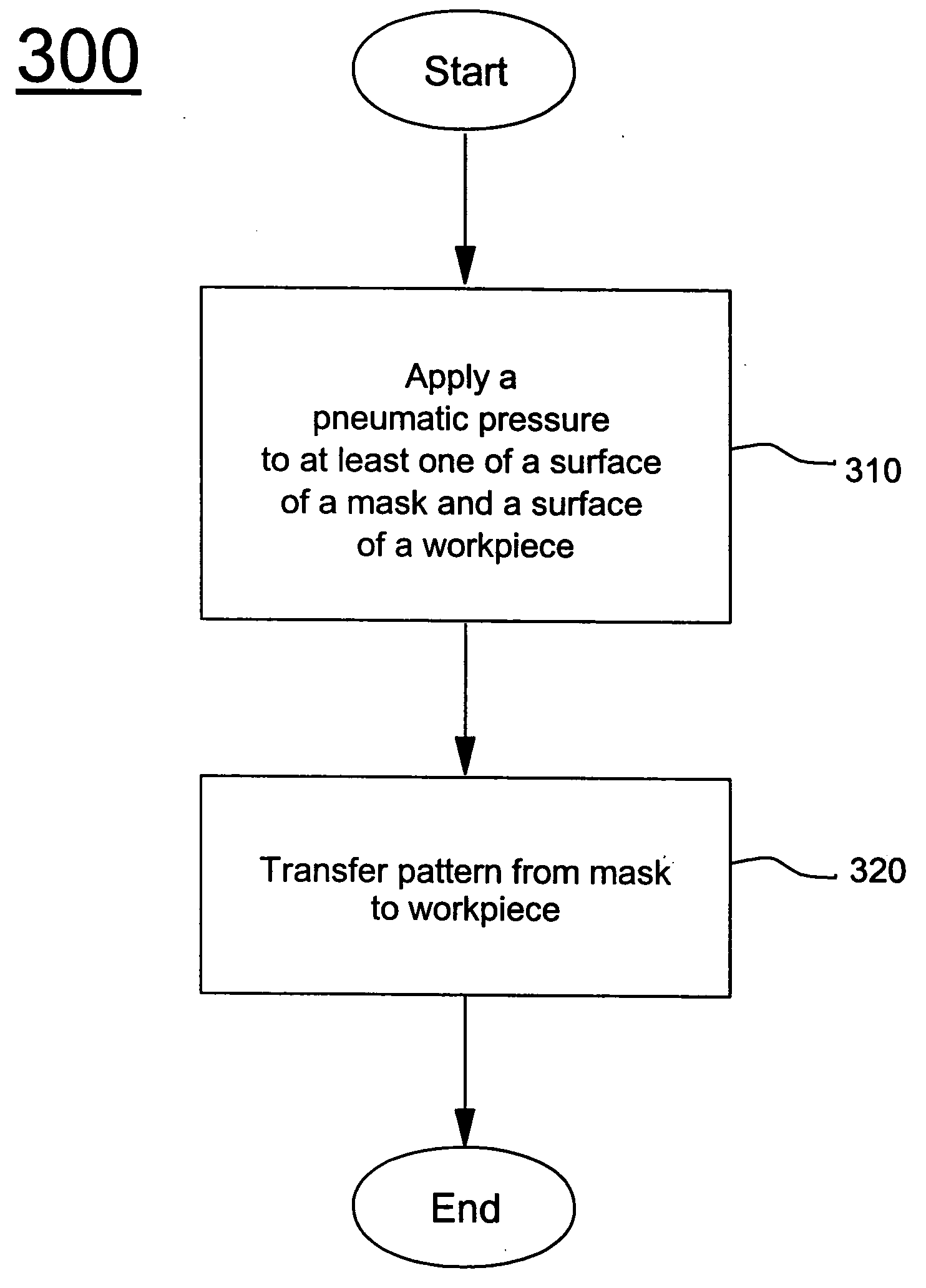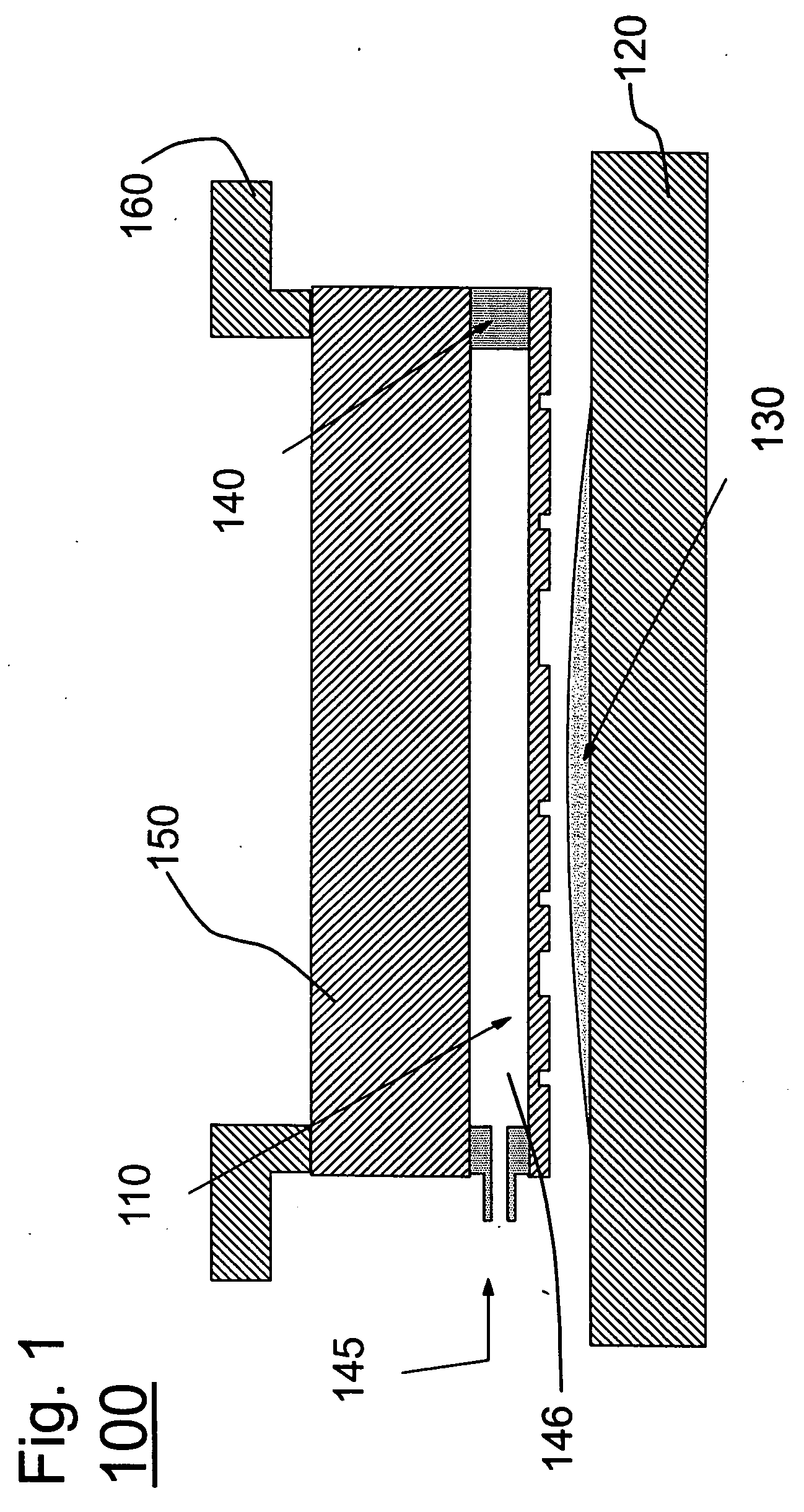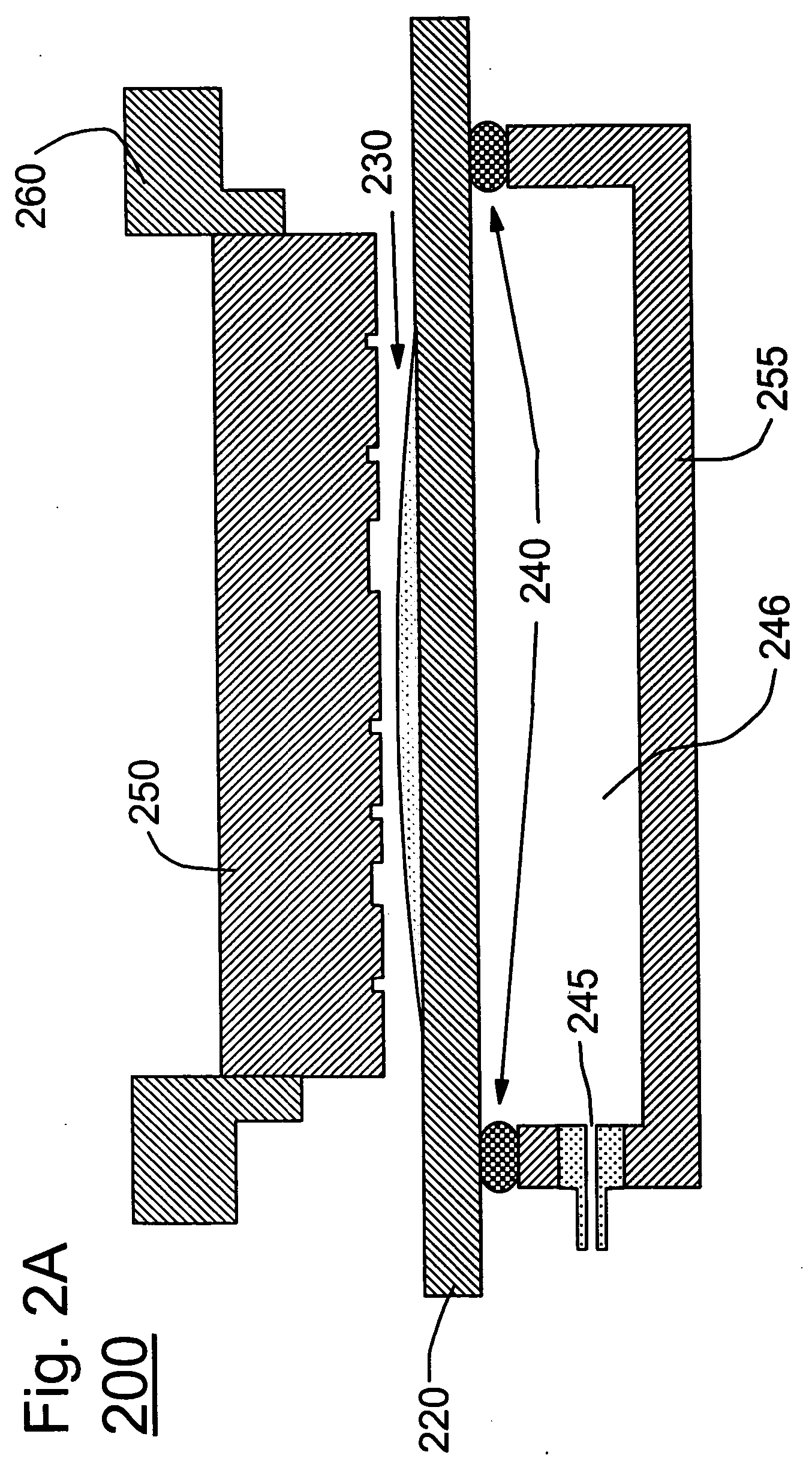Pneumatic method and apparatus for nano imprint lithography
a technology of imprint lithography and pneumatic method, which is applied in the field of pneumatic method and apparatus for nano imprint lithography, can solve the problems of template and/or workpiece deformation under mechanical pressure, further constraints on printing nanometer-scale features, and silicon wafers are typically not perfectly flat, so as to achieve high dimensional fidelity, avoid expensive mechanical tolerances, and flat all surfaces
- Summary
- Abstract
- Description
- Claims
- Application Information
AI Technical Summary
Benefits of technology
Problems solved by technology
Method used
Image
Examples
second embodiment
[0049] For example, FIG. 2A illustrates a pneumatic membrane imprint lithography apparatus 200 according to the present invention, in which pressure is applied to the backside of a flexible workpiece 220 (e.g., a silicon wafer). The workpiece has a photoresist 230 formed thereon.
[0050] The apparatus 200 uses a transparent window 250 with an etch pattern (mold) thereon as the lithographic pattern template. The transparent window is mounted to a mounting flange 260, and is opposed to the flexible workpiece 220.
[0051] The window 250 is preferably formed of a material chosen to be transparent to the radiation (e.g., actinic wavelengths) necessary to expose / activate the photoresist 230, but also, generally, transparent to visible wavelengths so that optical alignment can be performed of the pattern on the mask with the underlying workpiece 220. That is, the user should be able to look (image) through the window 250 in the alignment process.
[0052] The workpiece 220 may be held (or conta...
first embodiment
[0053] The rubber seal 240 is coupled to a housing structure 255 which includes an air pressure inlet 245 for receiving an air pressure from a pneumatic pressure source. Instead of air, as in the first embodiment, any gas may be used such as nitrogen, helium or the like. The inlet may have a diameter that is small, since the amount of gas flow is small.
[0054] As shown, the structure of the rubber seal 240 / housing 255 forms a predetermined gap 246 which is formed between a lower surface of the workpiece 220 and the interior surface of the housing 255.
[0055] As before, the window 250 is preferably optically perfect and preferably is formed of flat quartz material or the like.
[0056] The gap 246 preferably has a thickness within millimeter range but as would be evident the thickness of the gap depends upon the designer's constraints and requirements such as the composition (e.g., material and thickness) of the membrane and the amount of pressure being input to the gap to make the memb...
third embodiment
[0060] Additionally, FIG. 2B illustrates a pneumatic membrane imprint lithography apparatus 290 according to the present invention using partial vacuum and atmospheric pressure.
[0061] Specifically, the apparatus 290 is somewhat similar to that shown in FIG. 2A, but includes a mounting flange 291 having air conduits 292 formed therein. The air conduits 292 are coupled to a vacuum connection 293 via an inlet 245. An atmospheric pressure 294 is applied against the backside of the flexible workpiece 220. A partial vacuum 295 exists between the window 250 and the photoresist 230.
[0062] It is noted that in all three exemplary cases, it is intended that the workpiece can be positioned relative to the template so as to be able to print multiple impressions of the template on the workpiece in different locations (i.e., print a stepped pattern such as chip patterns on a semiconductor wafer).
[0063] Turning to FIG. 3, a flowchart of the inventive method 300 of nano lithography is shown.
[0064...
PUM
| Property | Measurement | Unit |
|---|---|---|
| thickness | aaaaa | aaaaa |
| surface roughness | aaaaa | aaaaa |
| pressure | aaaaa | aaaaa |
Abstract
Description
Claims
Application Information
 Login to View More
Login to View More - R&D
- Intellectual Property
- Life Sciences
- Materials
- Tech Scout
- Unparalleled Data Quality
- Higher Quality Content
- 60% Fewer Hallucinations
Browse by: Latest US Patents, China's latest patents, Technical Efficacy Thesaurus, Application Domain, Technology Topic, Popular Technical Reports.
© 2025 PatSnap. All rights reserved.Legal|Privacy policy|Modern Slavery Act Transparency Statement|Sitemap|About US| Contact US: help@patsnap.com



